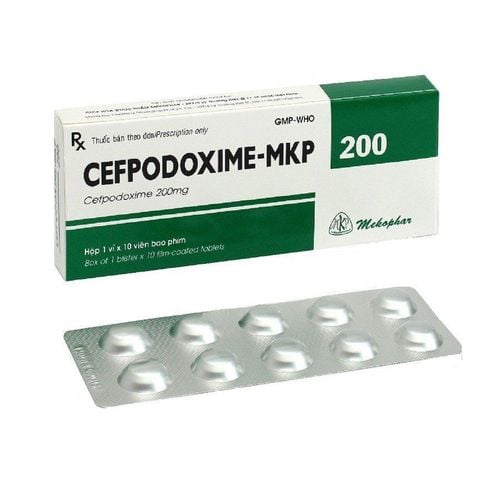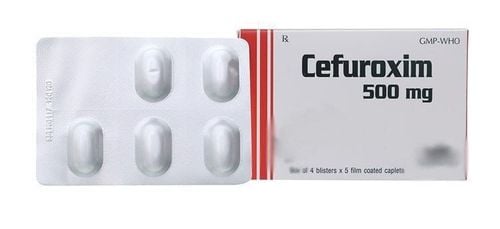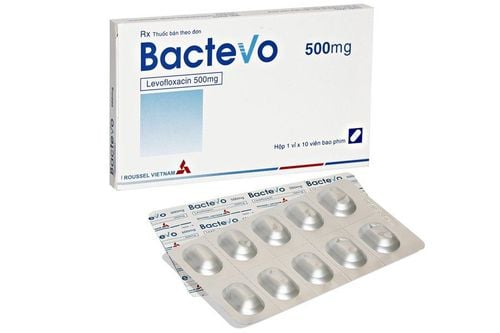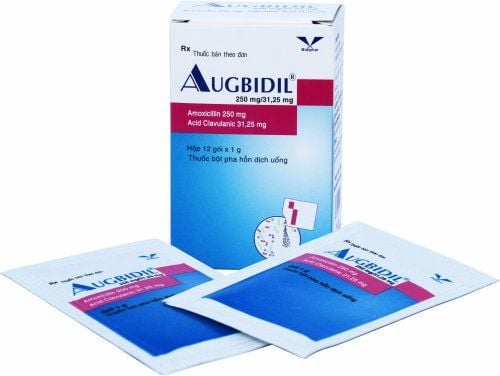This is an automatically translated article.
Cefacyl 250 is indicated in the treatment of respiratory tract infections, skin infections, urinary tract infections,... So how to use Cefacyl 250? What precautions should be taken when using this drug? Let's find out the necessary information about Cefacyl 250 through the article below.
1. What is Cefacyl 250?
Cefacyl 250 is an infection treatment drug manufactured by Cuu Long Pharmaceutical Joint Stock Company. Cefacyl 250 is used in the treatment of respiratory tract infections, skin infections, urinary tract infections... Effectively
Ingredients:
Cephalexin Monohydrate corresponding to Cephalexin 500 mg. Excipients: Sodium Starch Glycolate, Silicon Dioxide, Magnesium Stearate, Talc for just enough Dosage Form: Powder for oral mixing
Packing: Box of 30 packs x 3g powder medicine
2. Uses of Cefacyl 250
2.1 Indications Cefacyl 250 is a drug used to treat infections caused by susceptible bacteria, but not indicated for the treatment of serious infections such as: Respiratory tract infections: Acute and chronic bronchitis and dilation bronchial infection. Ear, nose and throat infections: Otitis media, mastoiditis, sinusitis, tonsillitis and pharyngitis. Urinary tract infections: Cystitis and prostatitis. Prophylaxis of recurrent urinary tract infections. Obstetric and gynecological infections. Skin, soft tissue and bone infections. Gonorrhea (when penicillin is not suitable). Dental infection. Prophylactic treatment instead of penicillin for patients with heart disease requiring dental treatment. Patients should undergo culture and susceptibility testing before and during treatment. In addition, patients should assess renal function when indicated. 2.2 How to use – Dosage How to use:
Take orally, before meals
Dosage:
Adults:
Usual dose for adults, take 20 - 500 mg every 6 hours, depending on the degree of infection . A patient can take a dose of up to 4g/day. But when higher doses are needed, an injectable cephalosporin should be considered. Children:
Normally, the patient will take the usual dose of 25-60 mg/kg body weight in 24 hours, and divide the drug into 2-3 oral doses. In severe infections, the maximum dose is 100 mg/kg body weight in 24 hours. Patients with renal impairment:
If creatinine clearance (TT0)-50 ml/min, serum creatinine (CHT)-132 micromol: maximum maintenance dose of 1 g, 4 times in 24 hours. If TTC is 49 – 20 ml/min, CRT: 133 – 295 mieromol/Ift, LDT: 1g, 3 times in 24 hours if TT0 is 19 – 10 ml/min, CRT: 296 – 470 micromol/It, LDT: 500mg then the patient will drink 3 times in 24 hours. If TT 10 ml/min, MR 471 microcromotift, LD: the patient will take 250 mg and take 2 times in 24 hours. Missed dose, overdose and management
Missed dose:
Take medicine as soon as you remember. However, if the interval between the next dose is too short, skip the missed dose and resume the dosing schedule. Do not take a double dose to make up for the missed dose
Overdose:
If an overdose occurs, notify your doctor immediately, or if you see unusual symptoms, you need to go to the hospital for timely treatment.
3. Notes when using Cefacyl 250
Contraindications:
Cephalexin should not be used in patients with a history of allergy to Cephalosporin antibiotics. In addition, Cephalosporins should not be used in patients with a history of penicillin-induced anaphylaxis or other severe IgE-mediated reactions. Note
Read the user manual carefully before use Keep out of reach of children Use for pregnant and lactating women
Pregnant and lactating women only use when absolutely necessary Use for drivers Vehicles and operating machines
Precautions for drivers and operators
4. Side effects of the drug Cefacyl 250
Common, ADR >1/100
Gastrointestinal: Diarrhea, nausea. Uncommon, 1/1000 < ADR < 1/100
Blood: Eosinophilia. Skin: Rash, urticaria, itching. Hepatic: Reversible increase in hepatic transaminases Rare, ADR <1/1000
Systemic: headache, dizziness, anaphylactic reactions, fatigue. Blood: Neutropenia, thrombocytopenia. Gastrointestinal: Gastrointestinal disorders, abdominal pain, pseudomembranous colitis. Skin: Stevens-Johnson syndrome, erythema multiforme, toxic epidermal necrolysis (Lyell's syndrome), Quincke's edema. Liver: Hepatitis, cholestatic jaundice. Urogenital: Genital pruritus, vaginitis, reversible nephritis. CNS symptoms such as dizziness, confusion, agitation and hallucinations have been reported, but no relationship with Cephalexin has been fully demonstrated. Storage
Store the medicine in a dry place, the temperature should not exceed 30 degrees Celsius, avoid direct light Keep out of reach of children
Please dial HOTLINE for more information or register for an appointment HERE. Download MyVinmec app to make appointments faster and to manage your bookings easily.













